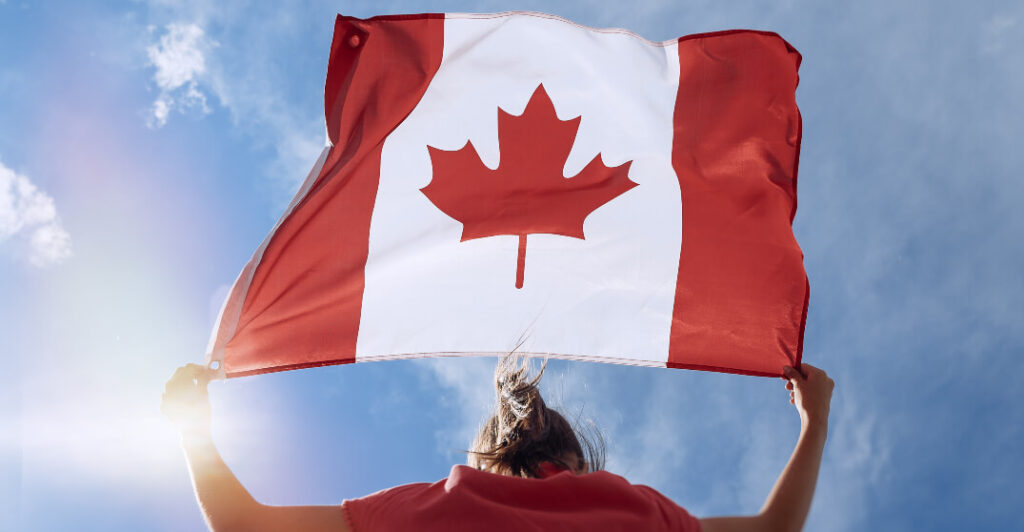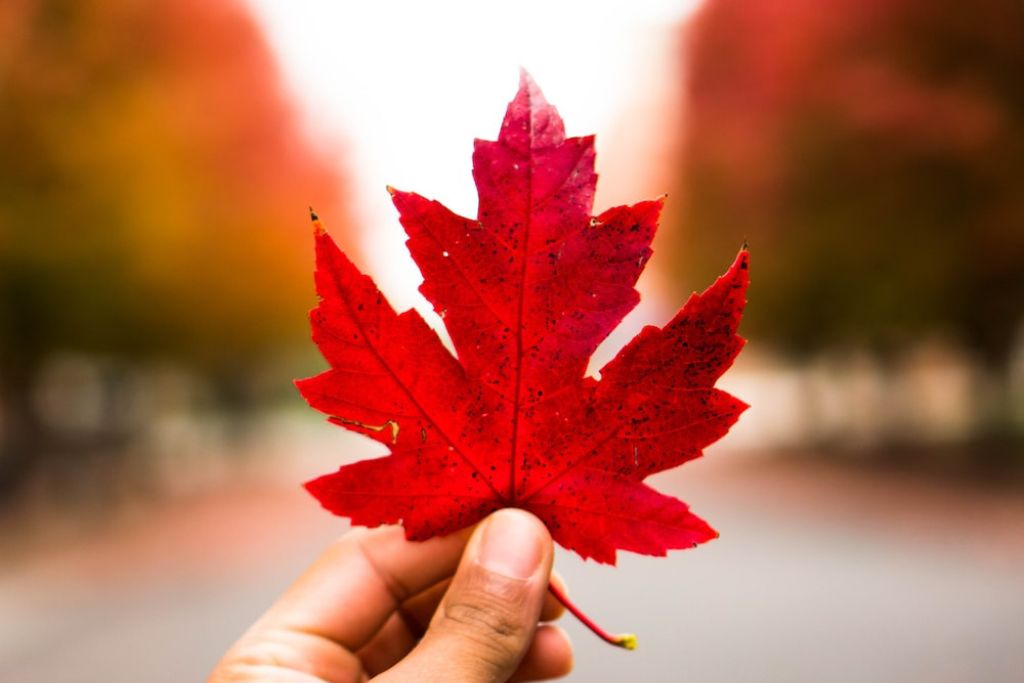Most people in the world know the maple leaf is the symbol of Canada, but few people know why this leaf became a national symbol and how important the maple leaf is to Canadians.
Why Is the Maple Leaf Canada’s Symbol?
Maple Trees In Canada Are Special Than In Other Places
The maple tree is mainly native to Asia, but there are a few species found in Europe, North Africa, and North America. Maple species are mainly trees up to 10-40m tall. Leaves in most species are ribbed and lobes propeller-shaped, with 3-9 veins leading to each lobe, one of which is centrally located. Although the maple species is distributed in many parts of the world, the Canadian maple tree is very special. Canada has vast maple forests, especially in the Southeast, where maple trees are everywhere. It is said that the maple leaves here change color more beautifully than in other places. And there is nowhere like this land where the maple can produce sweet sugar, from which people have processed typical foods, which are not only popular in the country but also known in many places. Maple sugar is scraped to obtain the resin, which is then heated to produce maple syrup, maple sugar, or maple candy.
Explore more Canadian Maple Syrup – Lovely Sweetness Melting Your Heart

In Canada, you can see red maple leaves in any forest around September and October. Impressive colors of the autumn forest with smooth roads filled with yellow leaves give people the feeling of indescribable feeling. When autumn knocks on the door, the whole city and roads are immersed in beautiful red, or sparkling orange-yellow, creating a charming and romantic scene just like elaborate movies on the screen. Especially in the city of Montreal, when the sky has just turned to autumn, the roads and parks suddenly change color; the proud reds and the sparkling orange-yellow colors cover the spaces, making the earth and sky dye a color. It is very romantic!
The Maple Leaf Has A Historical And Sentimental Connection To Canadians
Numerous tribes had to withstand the harsh hardships of winter, especially those from central North America to the eastern seaboard. And the maple tree was crucial for them. People who were exhausted after months of cold and darkness and perhaps at the end of their food supplies were helped by the maple’s sap as it started to flow in the spring.
The sap also hinted at the arrival of warmer weather. Many ceremonies centered around making maple sugar, which was seen as a cultural hero and a gift from the Creator. Sugar Moon is on the Anishnabe calendar, and maple leaves are a common motif in Algonquian beadwork.
The Aboriginal people of Canada were maintained by the maple tree, and they shared its nourishing benefits with the Europeans. Additionally, the maple produced valuable building materials and firewood. The enormous tree was kind, strong, and pure as people fought to survive.
Do you know Food in Canada – Maple syrup and others to eat
How Important Is The Symbol Of Maple Leaf To Canadians?
European immigrants to Canada utilized the maple leaf as a symbol as early as the 1700s. The St. Jean Baptiste Society adopted the maple leaf as its official symbol in 1834. The Le Canadian newspaper gave credence to the use of the maple leaf as an emblem in 1836. A literary yearbook called The Maple Leaf first mentioned the maple leaf as Canada’s official symbol in 1848. In 1860, the maple leaf made its official debut as a Canadian national symbol. In order to decorate for a visit from the Prince of Wales, the leaf was used. The maple leaf first appeared on the Ontario and Quebec provinces’ coats of arms in the 1860s.

The Canadian flag, which has a red maple leaf against a white background, was adopted as the country’s official flag in 1965. “The Maple Leaf Forever” served as Canada’s anthem for many years. The Canadian military likewise chose the maple leaf as their emblem. The maple leaf can also be seen on Canadian coinage.
